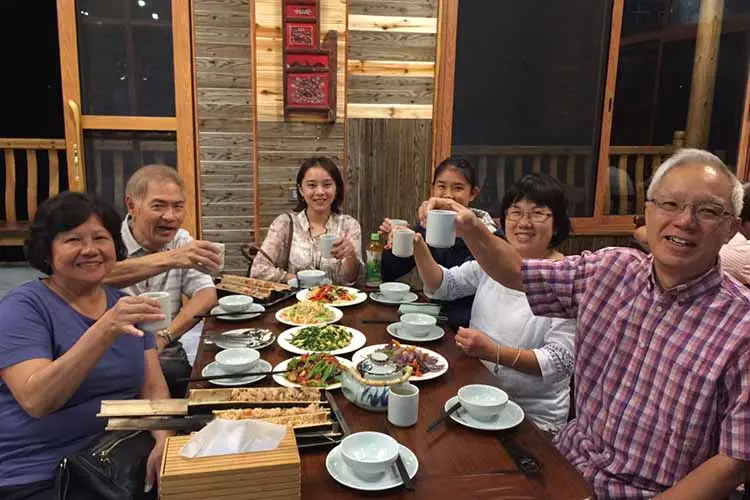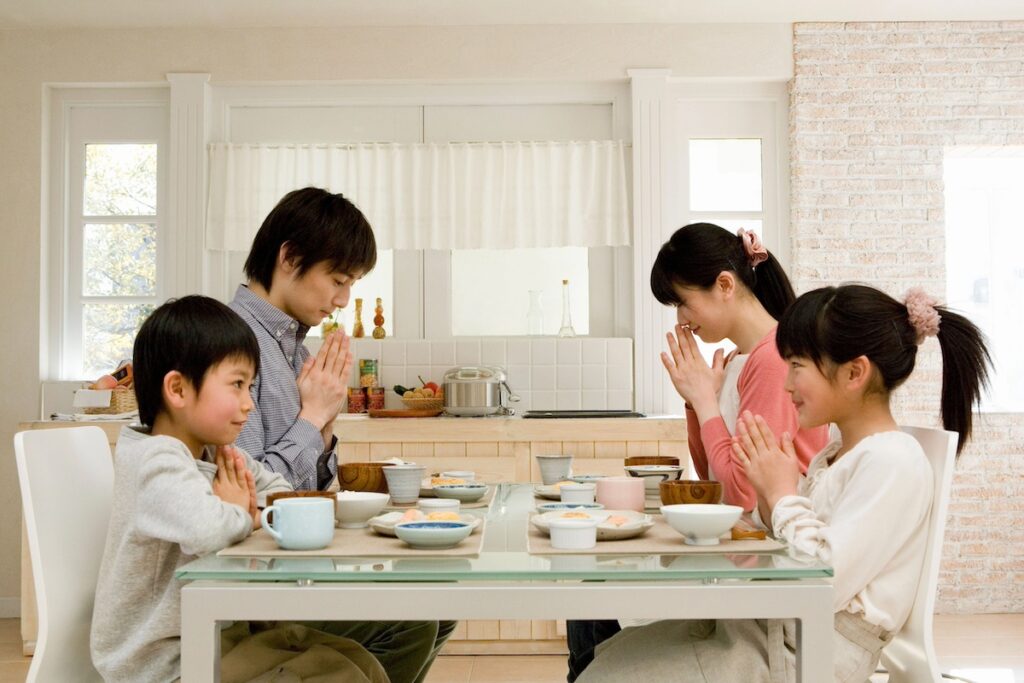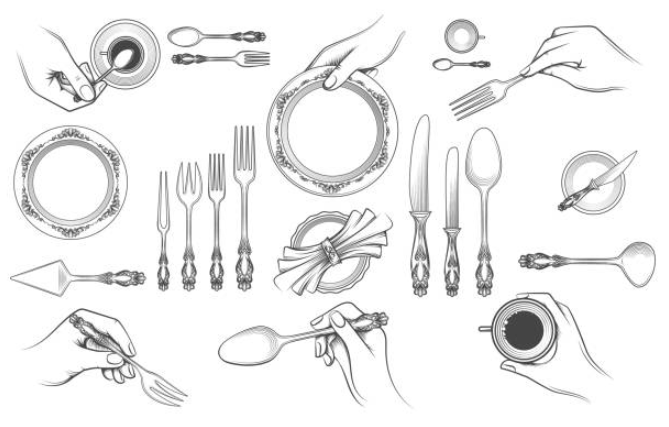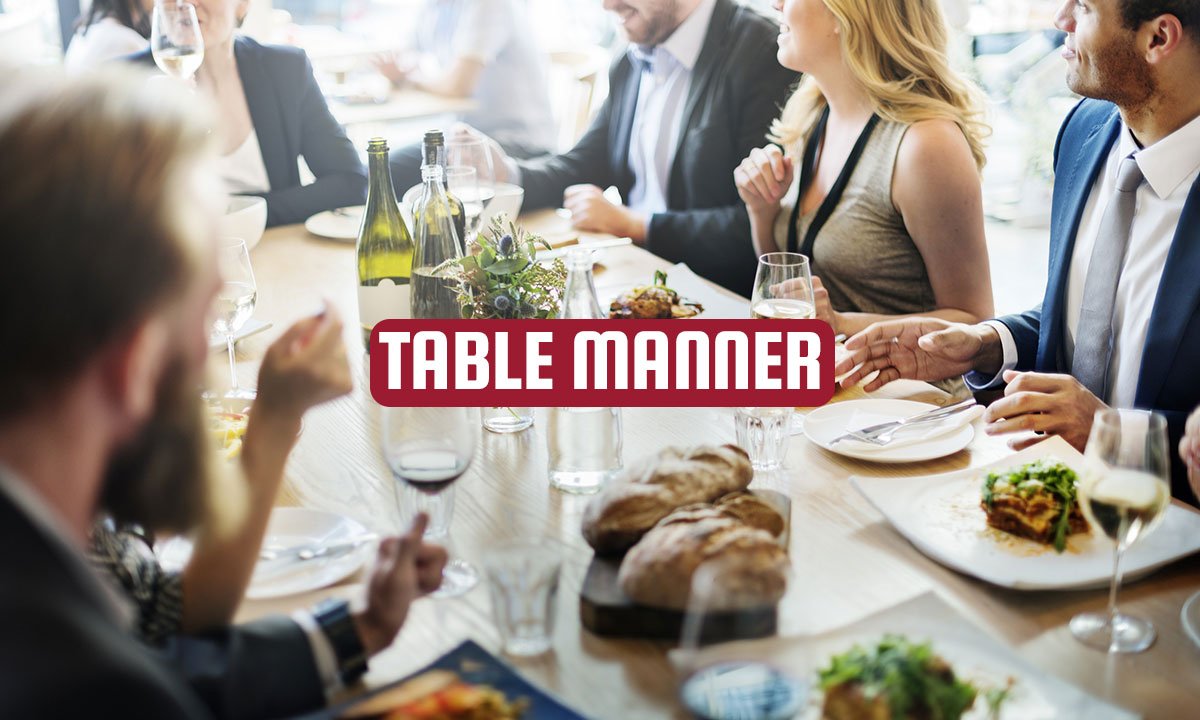I. Introduction
A. Definition of Table Manners:
Table manners refer to the customs, behaviors, and etiquettes observed while dining, encompassing various aspects such as how food is consumed, how individuals interact during meals, and the social norms associated with eating. It includes practices like using utensils correctly, chewing with the mouth closed, maintaining proper posture, and engaging in polite conversation during meals.
B. Importance of Understanding Diverse Dining Customs:
Understanding diverse dining customs holds significant cultural and social importance. It allows individuals to appreciate and respect different traditions, fostering cross-cultural understanding and unity. Knowledge of various dining practices enables people to navigate social situations gracefully, whether in personal interactions or while engaging in international settings. By recognizing and embracing diverse dining customs, individuals can display cultural sensitivity and adaptability, enhancing their social interactions and global awareness.
Table of Contents
II. Origins of Table Dining
A. Ancient Chinese Dining Practices During the Han Dynasty
- Introduction of Small Square Tables for Each Guest:
During the Han dynasty, the Chinese practiced dining with small square tables allocated to each guest. These tables were placed on the floor, and each guest had their own designated area to enjoy the meal. The setup facilitated a sense of personal space and allowed for individualized dining experiences. - Sitting on the Floor Without Chairs:
Notably, during this period, the Chinese tradition did not involve the use of chairs while dining. People sat on the floor, often using cushions or mats, emphasizing a communal and intimate dining setting. This practice also reflected the cultural emphasis on humility and equality among guests during meals.

B. Evolution of Dining Setups in China During the Song Dynasty
- Introduction of Larger Square Tables:
In the subsequent Song dynasty, there was a transition towards using larger square tables placed in the middle of the dining area. These tables accommodated multiple guests, fostering a more communal dining experience where people shared meals together. The shift to larger tables signaled a change in dining dynamics, encouraging a more collective approach to dining. - Transition to Using Stools and Chairs:
With the evolution of dining customs, stools and chairs gained popularity in China during the Song dynasty. This marked a departure from the practice of sitting directly on the floor. The introduction of stools and chairs represented a shift towards a more structured and elevated dining experience, where individuals used seating arrangements to gather around the table for meals.
These changes in Chinese dining practices during the Han and Song dynasties reflect the cultural evolution and societal transformations influencing dining customs, from intimate and floor-based dining setups to more communal arrangements with seating and larger tables.
III. Cultural Influences on Table Settings
A. Chinese vs. Western Dining Table Shapes
- Symbolism Behind Round Tables in Chinese Culture:
In Chinese culture, round dining tables symbolize unity and harmony. The absence of corners signifies equality among diners, fostering an inclusive atmosphere where all guests have equal status. The circular shape encourages conversation and facilitates the sharing of food among diners seated around the table, emphasizing the communal aspect of dining experiences. - Significance of Square Tables in Western Cultures:
In contrast, Western cultures often favor square or rectangular dining tables. These shapes are associated with structure and formality, reflecting a more organized and delineated approach to dining. The square table format may signify boundaries and individual spaces, influencing a sense of order and hierarchy among diners.
B. Japanese Dining Setup Influenced by Han Dynasty Etiquette

- Adoption of Traditional Chinese Table Practices:
Japanese dining customs were influenced by the Han dynasty’s dining etiquettes, particularly the use of small square tables and floor seating. The concept of individualized dining spaces and the practice of communal eating were inherited from Chinese traditions. - Incorporation of Cultural Heritage into Modern Dining Setups:
While Japan adopted traditional Chinese practices, it evolved its own unique dining style. Modern Japanese dining setups often blend traditional elements with contemporary designs. The integration of low tables (chabudai) and floor cushions (zabuton) in dining rooms reflects a cultural fusion, where heritage meets modern convenience.
IV. Etiquette Around the World
A. Cultural Norms in Various Societies
- Asking for Permission and Politeness in Western Dining:
Western dining etiquette emphasizes asking permission before joining a table, respecting personal space, and maintaining politeness during meals. There’s a focus on acknowledging boundaries and engaging in courteous behavior while dining with others. - Importance of Family Dining and Respect in Asian Cultures:
Asian cultures, particularly in countries like China, Japan, and Korea, prioritize family dining. Respect for elders, communal eating, and observing traditional rituals during meals are integral parts of Asian dining customs, signifying filial piety and cultural values.
B. Table Manners Across Different Countries
- Etiquette in the United States – Family Dining Traditions:
In the United States, family dining traditions vary but often emphasize the importance of sharing meals, especially during gatherings and holidays. It promotes bonding and communication among family members. - Italian, Middle Eastern, and Roman Dining Customs:
Italian dining customs revolve around conviviality, where meals are cherished as social events. Middle Eastern dining customs involve hospitality, with an emphasis on communal eating and generous servings. Roman dining traditions, influenced by ancient practices, often focus on moderation and respect for culinary heritage.
These diverse cultural influences on table settings and dining etiquette reflect the rich tapestry of traditions, values, and social norms that shape dining experiences around the world.
V. Modern Dining Habits

A. Changes in Dining Patterns Over Time
- Impact of Technology and Busier Lifestyles on Family Meals:
The evolution of technology and the fast-paced nature of modern life have significantly influenced family dining habits. Busier schedules and the prevalence of digital devices have altered the traditional family meal dynamics. Many families struggle to find time for communal dining due to conflicting schedules and distractions posed by electronic gadgets. - Shifting Trends Toward Informal or On-the-Go Dining:
Contemporary dining trends have witnessed a shift from formal, sit-down family meals to more informal or on-the-go dining experiences. Quick-service restaurants, takeout, and delivery options have become increasingly popular, catering to the convenience-oriented lifestyle of many individuals and families.
B. Balancing Traditional Etiquette with Contemporary Dining Habits
- Practical Adaptations in Modern Society:
The changing landscape of modern society has led to practical adaptations in dining etiquette. Flexibility and adaptability have become essential, with individuals incorporating informal dining styles into their routines while still valuing traditional table manners during more formal occasions. - Preserving the Essence of Table Manners in Changing Times:
Despite the evolving dining habits, there’s a growing recognition of the importance of preserving the essence of table manners. Efforts are made to uphold core values of respect, courtesy, and communal bonding associated with traditional dining etiquette, even amid contemporary lifestyles.
VI. Conclusion
A. Recap of the Significance of Understanding Table Manners:
Understanding table manners transcends mere dining practices; it embodies respect, cultural heritage, and shared human experiences. Table manners serve as a conduit for social interaction, fostering communication, respect, and unity among diverse communities.
B. Emphasizing the Role of Cultural Diversity in Dining Customs:
Cultural diversity plays a pivotal role in shaping dining customs worldwide. It’s essential to appreciate and embrace the rich tapestry of dining traditions, each offering unique insights into cultural values, social norms, and the art of communal dining.
C. Encouraging Respect and Appreciation for Different Dining Etiquettes:
Encouraging respect and appreciation for diverse dining etiquettes is crucial in fostering a more inclusive and understanding society. It promotes tolerance, acceptance, and a deeper appreciation for cultural differences, enhancing the fabric of global interconnectedness.
In conclusion, as dining practices evolve with the changing times, preserving the essence of table manners becomes a bridge between tradition and modernity, fostering respect, unity, and appreciation for cultural diversity in our global society.

